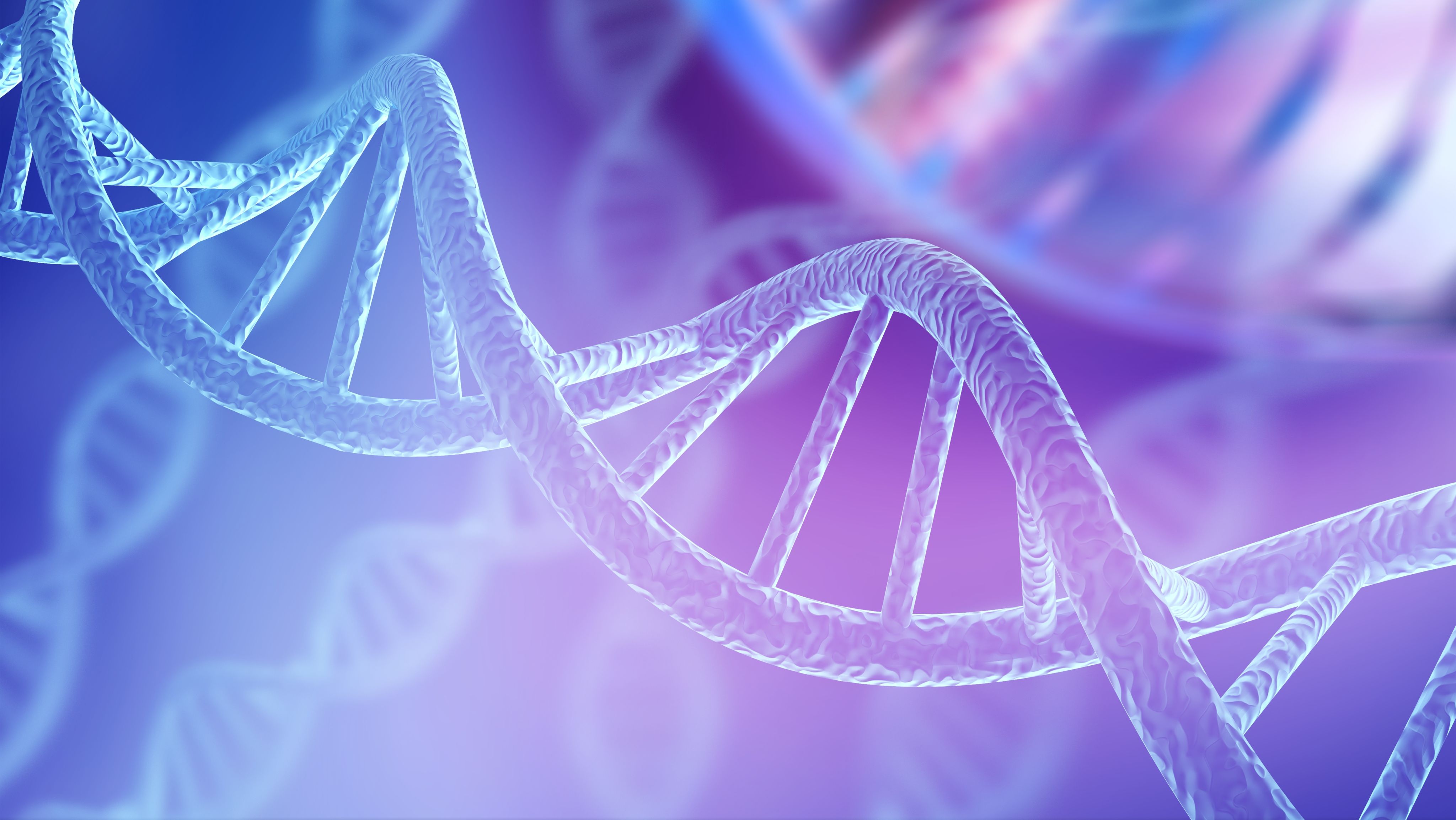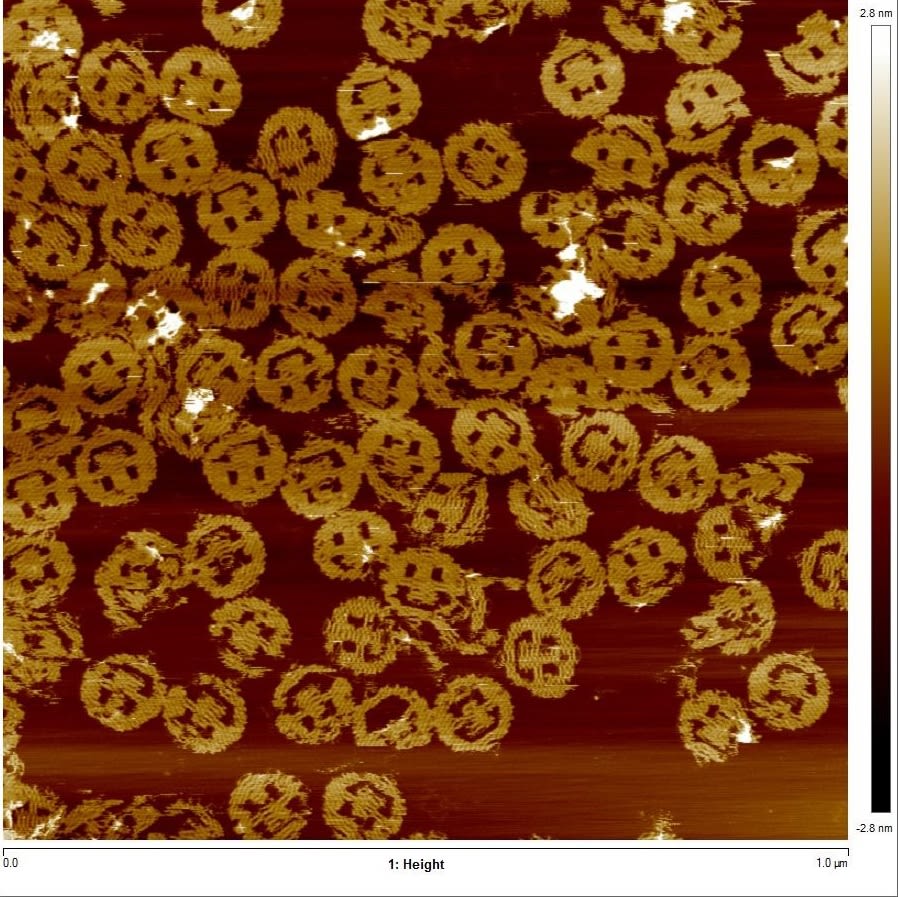Small science,
big thinking
Delivering DNA Origami
to inquisitive young minds

DNA. “The building blocks of life”, as you’ll have heard it described. But life isn’t the only thing we can build with DNA. In fact, from this extraordinary material, scientists can actually create far more – even robots. Now, thanks to a pioneering project initiated by the Bragg Centre for Materials Research’s Dr Andy Lee, DNA is helping to build the scientists of tomorrow.
Enthusiasm can be incredibly infectious. When Dr Andy Lee, Centre Manager at the Bragg Centre for Materials Research, talks about science, people listen.
“Science is fascinating, but it doesn’t have to be all about textbooks,” he explained. “It can come to life and feel exciting.”
Andy knows this from first-hand experience. Keen to promote the subject to the next generation, he has developed DNA Origami, an outreach project for secondary schools.
It’s an outreach project with a difference – and received rave reviews from students and teachers alike and even coverage on the local BBC network during a pilot phase.
“DNA Origami is all about introducing students to interdisciplinary research and the creativity of science and showing them what’s possible when you go on to study or work in materials science later on,” Dr Lee said. “It’s a field that involves lots of imagination and opens up all kinds of creative possibilities, so we want to really showcase that.”
And there are important benefits to doing so.
The UK’s Science, Technology, Engineering and Mathematics (STEM) skills shortage has been much discussed in the media during recent years, while representation in related industries is far from equal.
According to research by the diversity and inclusion campaign WISE, women make up just 22 per cent of the core STEM workforce, while black and minority ethnic men are 28 per cent less likely to work in STEM than white men.
“By going into schools and giving more young people a taste of materials science, I hope we can open their eyes to the possibilities of pursuing it at university,” Andy said. “Our partner, the Institute of Research in Schools, has a network of schools nationally and helps us target schools in disadvantaged areas and under-represented groups.”
The students are possibly the youngest people to ever construct artificial structures using DNA. We really want to inspire a new generation of scientists into material science.”
DNA, or deoxyribonucleic acid, to give it its full name, has fascinated scientists for more than 150 years.
It was first discovered in 1869, but it wasn’t until 1943 that scientists realised that it was the genetic material in cells – and contained a code for life. 10 years later, Francis Crick and James Watson made history when they established that the structure of DNA consists of two strands that coil around each other to form a double helix, building on work originally done at Leeds.
In the late 1980s, Ned Seeman started using DNA molecules to create non-natural structures and a new field of nanotechnology was born.
“Relatively speaking, it’s quite young science, so we’re still making huge leaps forward with what we can do with DNA,” Andy said.
It’s a mind-boggling material. All human cells contain DNA, and if you fully stretched out the DNA in just one cell, it would be about two metres long. “But all the DNA in your cells put together would be about twice the diameter of the solar system,” Andy added.
What’s more, it can be used in an unconventional way to build nanoscale structures – tiny creations that aren’t plants or animals, yet still contain DNA.
And that’s precisely what DNA Origami is all about.
Postgraduate science labs in secondary schools

Through the programme, students first learn the skills they will need to successfully complete research. “After completing video tutorials, lessons to build their skills, and exercises to work through, they are tasked with designing their own creations. Students get to grips with a piece of software called cadnano – computers play a huge role in what we do in materials science,” Andy said.
Using the software, the students then design their own DNA nanostructure, which could be something like a smiley face.

The DNA nanostructures created by the school pupils, which are around 100 nanometres in size.
The DNA nanostructures created by the school pupils, which are around 100 nanometres in size.
Next, it’s time to get truly practical. Using some basic equipment – specifically pipettes and a centrifuge in their school science labs – they get to synthesise a predesigned DNA origami structure. By taking specifically designed segments of DNA, the students can weave them together to form the prescribed microscopic shape.
Truly microscopic, too. The structures are around 100 nanometres in size; a sheet of paper is about 100,000 nanometres thick, while a human hair is around 50,000 to 100,000 across.
“It’s absolutely postgraduate level science,” Dr Lee said. “These students are possibly the youngest people to ever construct artificial structures using DNA. We really want to inspire a new generation of scientists into material science.”
“This is cutting-edge, a young field; not many people have worked on this. We’re putting it into the hands of young students who are submitting their applications for university.”
Students today, scientists tomorrow

To date, DNA Origami has been delivered to 160 A-Level students in 15 schools.
The project is a collaboration between the Bragg Centre, the Henry Royce Institute and the Institute for Research in Schools. It originated when Andy realised that DNA would be a familiar material to secondary school students, but at the same time could be used to demonstrate some unexpected and intriguing scientific applications.
“DNA nanotechnology has all kinds of potential, especially in medicine,” Andy said. “Research has already been done to create nanosized boxes made from DNA that can deliver chemotherapy drugs, only opening when they meet a cancer cell. This could eventually provide a more effective treatment with fewer side effects one day.”
It’s a fascinating subject, as Andy is well able to make clear.
And thanks to DNA Origami, many more budding scientists could be about to make it their careers for decades to come.
“Some of the students have referenced this in their UCAS applications, and some have even changed their applications to Leeds as a result,” he said.
About Andy
Dr Andy Lee is Centre Manager of the Bragg Centre for Materials Research, based at the University of Leeds and part of the Henry Royce Institute.
He has a research background in bionanotechnology, molecular scale assemblies and high-speed atomic force microscopy and a passion for science communication, and breaking down boundaries between science and arts.
Andy gained his PhD in Bionanotechnology and Biophysics at Leeds in 2016, has published articles in various journals, and graduated as a Fellow of the University’s Engagement Excellence Scheme in the class of 2020/21.
About Neil
Dr Neil Thomson has been a Reader in Biological Physics and Bionanotechnology at Leeds since 2010.
Neil jointly manages the atomic force microscopy (AFM) facility based in the School of Physics and Astronomy, and his research group works to study the structure and dynamics of biological systems and develop the application of AFM to manipulate material down to the nanoscale.
Neil obtained his PhD from the University of Bristol before securing postdoctoral appointments at UC Santa Barbara, the University of Nottingham and École Polytechnique Fédérale de Lausanne.
About Christoph
Christoph Wälti is Professor of Bionanotechnology in the School of Electronic and Electrical Engineering at Leeds.
His research is focused on molecular nanotechnology, and in particular self-assembly applications and the interface between biology and semiconductors.
Christoph gained his PhD from the Laboratory of Solid State Physics at ETH Zurich, having previously graduated from the same university with an MSc in Physics. In 2001, he was awarded a Swiss Marie-Curie Fellowship to work on the self-assembly of molecular complexes using DNA at the Cavendish Laboratory at the University of Cambridge.
About Ilaria
Ilaria Sandei has been a PhD student at Leeds since 2018, having previously completed both her Masters in Photochemistry and Molecular Materials and her undergraduate studies in Industrial Chemistry at the University of Bologna.
Ilaria’s research is multidisciplinary, with a focus on bioinspired crystallisation of calcium carbonate and ice.
During her PhD, she has been working on the synthesis of inorganic crystals in the presence of biomolecules, in order to provide insights into the polymorph selection, templating and morphology control processes.
About Gayarithi
Gayarithi is a PhD student at Leeds, with interest in DNA origami, membrane biology, nanopores and membrane proteins.
Before moving to West Yorkshire, she worked in India as a Junior Research Fellow at the National Institute for Interdisciplinary Science and Technology of the CSIR, and previously as a Project Assistant at the Rajiv Gandhi Centre for Biotechnology.
Gayarithi secured her MSc in Biotechnology at Mahatma Gandhi University in Kottayam, Kerala.
Audio clips
Listen to Andy Lee, Neil Thomson, Christoph Walti, Ilaria Sandei, and Gayarithi Mohanan discuss how working with DNA Origami impacted their research and helped build cross-disciplinary opportunities:
Listen to Dr Andy Lee explain the DNA Origami outreach work with schools and the positive impact it aims to have on future generations: